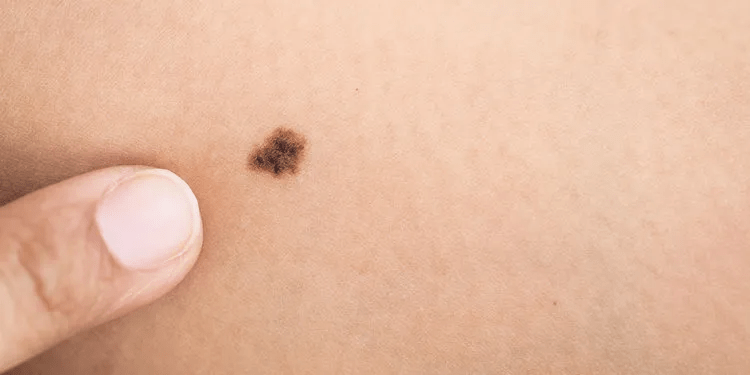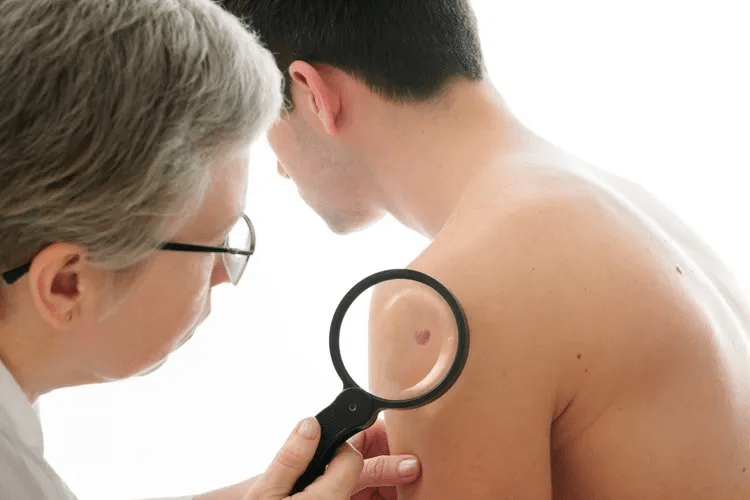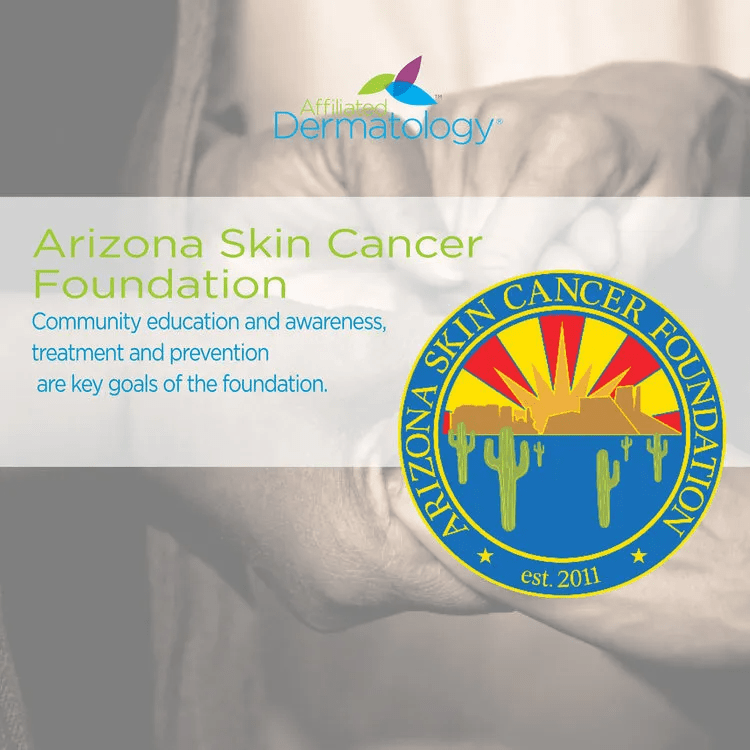- About
- Services
- Patient Information
- Specials
- Shop
- Locations
- Contact Us
Skin cancer is the most common of all cancers and accounts for nearly half of all cancers in the United States. Get the facts on skin cancer types, symptoms, signs and treatment and types.
Over the past three decades, more people have had skin cancer than all other cancers combined with more than 3.5 million cases of basal and squamous cell skin cancer diagnosed in this country each year. Early skin cancer detection is key to saving lives especially when melanoma accounts for less than one percent of skin cancer cases, but the vast majority of skin cancer deaths.
Oftentimes, people go about their fun in the sun lives without acknowledging the high risk that the sun inflicts on the skin. There are many things you can do to detect and protect against skin cancer. But first, let’s get to the bottom of what is skin cancer?
Skin cancer is the uncontrolled growth of abnormal skin cells. It occurs when unrepaired DNA damage to skin cells (most often caused by ultraviolet radiation from sunshine or tanning beds) triggers mutations, or genetic defects, that lead the skin cells to multiply rapidly and form malignant tumors.
There are 3 main types of skin cancers:
Basal and Squamous Cell Cancers are types of skin cancer that are classified as non-melanomas to set them apart from the more serious type of skin cancer, melanoma. They usually start in the basal cells or squamous cells, which is how they get their names. These cells are found at the base of the outer layer of the skin. Most basal and squamous cell cancers develop on sun-exposed areas of the skin, like the face, ears, neck, lips, and the backs of the hands.

Depending on the type, they can be fast or slow growing, but they rarely spread to other parts of the body. Basal cell carcinoma is the most common form of skin cancer with more than 4 million cases diagnosed in the U.S. each year. Squamous cell carcinoma is the second most common form of skin cancer with more than 1 million cases diagnosed in the U.S. each year. Basal cell and squamous cell cancers can be cured if found and treated early. Basal cell carcinoma is discussed in more detail in The Most Frequently Occurring Form of Skin Cancer and squamous cell carcinoma in The Second Most Common Form of Skin Cancer.

Melanoma is a type of skin cancer that begins in melanocytes. It is potentially dangerous because it can invade nearby tissues and spread to other parts of the body. The earlier melanoma is detected and removed, the more likely the treatment will be successful. It can develop from a common mole or a dysplastic nevus and in areas of apparently normal skin. Often the first sign of melanoma is a change in the shape, color, or size of a mole.
Treatment often starts with complete removal of the melanoma and normal-looking skin around it. This helps to ensure that the cancer cells are removed.Melanomas are discussed in more detail in Melanoma Skin Cancer.
Atypical melanocytic proliferations (AMP’s) are neoplasms which are considered to be precursors to melanoma. They begin in melanocytes and show features under the microscope which are very similar to melanoma. Like melanomas, they can develop from a normal mole, a dysplastic nevus, or on normal skin. If an AMP is left untreated, there is a high likelihood that it will develop into a melanoma. Therefore treatment involves surgical excision to insure that the lesion is completely removed.
Dysplastic Nevus
What is a dysplastic nevus? A dysplastic nevus is an unusual mole that may be large and flat and does not have a symmetric round or oval shape. The edge is often indistinct. It may have a mixture of pink, tan, or brown shades. Dysplastic nevi, while not cancerous, have the potential to change and develop into melanoma, a life threatening skin cancer. People who have many dysplastic nevi have a greater chance of developing melanoma.
Who has an increased risk of developing dysplastic nevi? People with numerous moles, significant sun exposure or a family history of melanoma are at risk.
How do you identify and treat dysplastic nevi? A dysplastic nevus may occur anywhere on the body, but is usually seen in areas exposed to the sun. A dysplastic nevus may also appear in areas not typically exposed to the sun, such as the scalp. The “ABCDE” rule describes the features of early melanoma and is a tool used to identify abnormal moles. As a preventative measure, an excision may be recommended to remove the mole and the surrounding margin of abnormal cells.
It’s important for your dermatologist to tell the types of skin cancer apart, because they are treated differently. It’s also important for you to know what skin cancers look like. This can help you find them at the earliest possible stage, when they are cured most easily. The “ABCDE” rule describes the features of early melanoma and is a tool used to identify abnormal moles.

The best ways to help lower your risk of skin cancer is to stay out of intense sunlight and practice sun safety. Risk factors for skin cancer include:
Affiliated Dermatology recommends annual full body skin exams with your dermatologist in addition to monthly self-exams for patients with a personal history of melanoma. In addition, we recommend that individuals identified during routine care who meet any of the following criteria be considered for skin cancer risk assessment by a dermatologist:
Skin cancer can be found early, and you and your health care providers play key roles in finding skin cancer. According to The Skin Cancer Foundation, people must practice monthly head-to-toe self examination of their skin, so that they can find any new or changing lesions that might be cancerous or precancerous. Skin cancers found and removed early are almost always curable. Learn how to examine your skin for changes with skin cancer photos. If you have any of these symptoms, see a provider:
Follow these tips to protect your skin from the damaging effects of sun exposure and reduce your risk of skin cancer. The best way to prevent skin cancer is to limit exposure to sunlight. Having a suntan or sunburn means that the skin has been damaged by the sun, and continued tanning or burning increases the chance of developing skin cancer.

Annual complete body skin examinations by the doctors at Affiliated Dermatology can help in the diagnosis and treatment of skin cancer. Affiliated Dermatology also specializes in the treatment of malignant melanoma by using the specialized technique of slow Mohs surgery.
Some tumor cell types, including melanocytes, lose their cellular details when processed as frozen tissue used in traditional Mohs surgery. In order to accurately and adequately evaluate excised tissue margins of thin melanomas, a leading-edge, modified Mohs surgery technique called “slow Mohs” was recently developed.
The slow Mohs procedure for skin cancer, utilizes permanent sections for tissue evaluation. This skin cancer procedure allows for microscopic evaluation of the entire surgical margin. Any residual tumor seen is removed by repeating the “slow Mohs” procedure. After complete removal of the melanoma cells, reconstructive surgery is completed with maximal preservation.
With an in-house laboratory and board-certified dermatopathologist, the doctors at Affiliated Dermatology are able to provide this new state- of-the-art treatment for thin melanomas.
Our dermatologists volunteer their time and expertise to provide skin cancer screenings as a free service through Affiliated Dermatology. For more information or to schedule a screening for your organization, school or wellness event, please submit your information below.
Whether you wish to receive treatment for a skin condition or an aesthetic procedure, you can be assured you will be treated with professional and personal care by one of our Dermatologists, Physician Assistants, and other professional staff.

Affiliated Dermatology is a proud supporter of the Arizona Skin Cancer Foundation. Through the foundation’s assistance program, Affiliated Dermatology is able to provide medical services for patients who do not have health insurance. Find detailed information on the Arizona Skin Cancer Foundation and the assistance program.
Find a dermatologist near you in Arizona for your skin cancer screening at one of Affiliated Dermatology’s five convenient locations. Our skin cancer treatment clinics are located in Scottsdale, Anthem, Deer Valley, Surprise and Gilbert.
One in five Americans will develop skin cancer in the course of a lifetime. If you notice a change on your skin, see your doctor at Affiliated Dermatology. Don’t wait until the change looks like the more advanced skin cancers. When skin cancer is found early, it can be treated more easily. And remember, if you can spot it, you can stop it. Call today to schedule your skin cancer screening appointment.
A full-service dermatology group offering services in general dermatology, skin cancer detection and treatment, Mohs surgery, aesthetics, and allergy. At our Valley-wide locations, we take pride in our dedication to help inspire and empower you to make educated, healthy decisions about skin care.
Follow Us Online:
 Scroll Up
Scroll Up